- Home
- Bill James
The Man from the Train Page 4
The Man from the Train Read online
Page 4
The sheriff asserted that Hardy changed small details in his story about finding the bodies—but we will note that the sheriff himself has now changed the very essence of his story twice, alleging first that the murders were committed because the family opposed the marriage, then that Hardy had quarreled with his father over chores, then that he had committed the murders in an effort to inherit the family’s modest possessions. And, oh yeah, what bride doesn’t want to move into a rental house that has recently been the scene of three grisly murders?
It is immaterial how the blood got onto the hat, since: a) the blood was not on the hat at the time he had visited his girlfriend, and b) the bodies were cold by the time they were discovered. If Raymond Hardy committed the murders, he had to have committed them before he visited his girlfriend, not after. That would mean that, if the blood got onto the hat as he was committing the murders, it would have been there when he visited his girlfriend’s family. Since the blood had to get onto the hat after the visit, it cannot be evidence about the crime.
A note was found in a drawer in Raymond’s room, giving $1,000 from James Hardy to each of his two sons, Earl and Raymond. It was just a gag, said Raymond; the note was a forgery, but it was just a joke. The story about the bridled horse could not be true, said the sheriff, because he had found the bridle and saddle in the barn, covered with dust, as if they had not been moved for some time. Raymond Hardy was arrested with money in his pockets; he could not adequately explain, said the sheriff, where the money had come from. Another spoke in the wheel of evidence surrounding him was a gun. Earl Hardy’s pistol had been hanging on a peg near where he was murdered. After the crime it was missing from its holster, but the gun was later found in a locked suitcase in Raymond Hardy’s room. It wasn’t the same gun, said Raymond. He and his brother had purchased identical pistols. This was his.
The newspapers were now certain that Raymond Hardy had murdered his family. The Waterloo Courier reported on June 8 that “developments since Monday . . . have strengthened, rather than weakened, the belief of Sheriff A. A. Nicholson and his officers and County Attorney J. H. Egermayer that Raymond Hardy, the youngest and only living member of the family, committed the crimes.”
Yesterday, the day before what was to have been his wedding day at Newton, Raymond submitted to a three hours’ examination and grilling in his cell by County Attorney Egermayer. Under the examination which at times, Egermayer said, was as racking as could well be imagined, Raymond stood calm, and unflinching. Without, speaking figuratively, “batting an eye,” and in a calm and even tone of voice he answered every question put to him. Cool and collected, without ever once losing his temper he told and retold details of the tragedy, of the Sunday it happened and of his past life and conduct. Back and forth, crossing and re-crossing and jumping here and there, first touching one detail then another, the prosecutor led him. But the lad faltered but little, although the county attorney said that in details he tripped in his story.
This, again, from the Waterloo Courier. On the morning of June 9, the day after the funerals, Hardy was found unconscious on the floor of his cell, bleeding heavily from the nose. It appeared that he may have broken his nose in a suicide attempt, banging his head against the walls. Hardy refused to explain what had happened to him, and the sheriff insisted there had been no suicide attempt. A paragraph quoting neighbors in support of the beleaguered boy—and containing no other information—was headlined ominously “Raymond is an enigma.”
Five hundred people crowded into Melbourne to learn what they could from the inquest; teams of horses were tied up along the street in every conceivable place. Mabel Starnes, Raymond’s fiancée, was the first witness. She was several years older than the accused, about twenty-four, and in fact she was pregnant, although the newspapers never alluded to this, and always referred to her, throughout the ordeal, in respectful terms. She had worked on the Hardy farm, for Mrs. Hardy, in the past. She said that the last time she had seen Mrs. Hardy, a few days before the murder, she had helped Mrs. Hardy feed the chickens, and Mrs. Hardy had told her that once they were married half of the chickens would be theirs. Mrs. Hardy had never expressed any opposition to the marriage, and did not advise them not to get married. Mabel said that Raymond Hardy seemed in every respect normal throughout the evening. Raymond Hardy was asked whether he sounded the alarm over the telephone before or after finding his brother’s body. He said that he couldn’t remember; the entire sequence of events was like a dream to him, and he had no firm hold on it. On June 10, 1910, the coroner’s jury failed to find sufficient evidence to hold Ray Hardy, and ordered his release.
On June 11, Governor Carroll of Iowa offered a $300 reward for the apprehension and conviction of the murderer(s). A Professor Macy of Highland Park College in Des Moines (now part of Drake University) examined the bloodstained clothes to attempt to determine whether the blood was human blood or chicken blood, but he made no public statement as to his findings. The wallpaper with the handprint in blood was peeled off the wall; this also was to be submitted to experts in an effort to prove that it matched Raymond Hardy’s hand. Experts concluded that there was insufficient ridge detail for the prints to be usable.
Within days after the murders, neighbors had moved in and scrubbed the crime scene clean, washing the blood off of and out of anything that could be cleaned. Two days after his release Raymond Hardy returned to the scene of the murders and, assisted by his neighbors, boxed up all of his belongings and cleared out, going to stay with relatives in Des Moines. Sheriff Nicholson was there as this was being done, and newspaper reporters.
Another small town in Marshall County is Luray, Iowa; Luray is southwest of Marshalltown, which makes it to the northeast of Melbourne, and less than five miles straight north of Van Cleve; I’m sure you have that all straight. Anyway, a man named Frank Wickersham, who lived and loved in Luray, came forward belatedly with the information that, on the morning of June 6, he was riding the train north toward Marshalltown, when two men got on the train in Melbourne. No one knew them, and they spoke to no one. One of them had a good deal of blood on his coat, and several of the other passengers remarked on it. However, since none of the passengers knew that the murders had occurred the previous evening, no effort was made to identify the man, who rode the train on north when Wickersham debarked in Luray.
By the end of June donations had increased the reward fund for the apprehension of the murderers to $885. By mid-July Raymond Hardy had moved in with the Starnes family, and was helping them tend to the crops on his old farm. Being only nineteen years of age he needed the consent of a guardian to marry Miss Starnes. A neighbor was named his legal guardian, and they were married in Newton on or about August 12, 1910. On September 12 the possessions of the Hardy family were sold at a public auction. Prices were inflated, as people turned out to bid on relics from the infamous crime. Neighbors pressed for a grand jury to investigate the murders, but officials decided that would be a waste of money, since there was no new evidence to present.
A baby boy, Otis Herbert, was born to Mabel in early October, five months after the murders. The couple moved to Minnesota, where they had two more children and raised a family. Mabel Starnes Hardy died in 1951, and Raymond Hardy passed away on May 24, 1969. The house where the murders occurred still stands, and is occupied today. The Web site “Iowa Cold Cases” has a photo of the house, dated 2012.
CHAPTER V
The New Orleans Axeman
The preface to the story of the New Orleans Axeman was a gruesome attack on July 8, 1908, which ended the life of a man named Alfonse Durel, who had lived on Bourbon Street. This appeared, at the time, to be an isolated albeit unusual event, and it is not mentioned in most accounts of the series of crimes by the New Orleans Axeman. As that was the preface, the first chapter, then, was the murder of August Crutti (and the attack on his wife) on August 14, 1910. We’re going to skip the details because, frankly, it’s not our story.
Five weeks later, whoever h
ad attacked the Cruttis attacked another pair of Italian grocers, Joseph and Vincenta Risetto. Both survived the attack, although Joseph died a couple of years later, perhaps as a consequence of his wounds. The attacks on the Cruttis and Risettos were so obviously similar that the press immediately connected them:
Exhibiting all the gruesome details of the crime committed at August Crutti’s grocery, at Lesseps and Royal Streets, on August 14th, a bloody duplicate of that deed was uncovered yesterday morning when Joseph Risetto, an Italian grocer, was found on the floor of his bed-room covered with blood from a wound on the face, while his wife lay mortally wounded on the bed.
—The Daily Herald, Gulfport, Mississippi, September 21, 1910
We believe that Mrs. Risetto survived the attack; the newspaper jumped the gun in saying that she was mortally wounded. There were more attacks in New Orleans in 1911 and 1912, and then there was a break of several years in that series, which resumed in earnest in May of 1918, and terrified New Orleans in 1918 and 1919.
The story of the New Orleans Axeman is vastly better known than The Man from the Train; information about it appears in many different books, which some of you have read. Because of this, you may be wondering whether The Man from the Train and the New Orleans Axeman could be one and the same.
No.
Absolutely not.
The Man from the Train and the New Orleans Axeman have five things in common:
1. Both attacked people with an axe.
2. Both attacked in the middle of the night.
3. Both normally used an axe taken from the premises.
4. Both abandoned the axe at the scene of the crime.
5. Neither was primarily a thief.
However, when you look at the small details of the crimes, virtually everything is different. The Man from the Train almost always attacked within an hour of midnight. The New Orleans Axeman attacked later in the morning, 3:00 to 4:00 a.m. The Man from the Train attacked with the blunt side of the axe, almost always; the New Orleans Axeman with the sharp side of the axe. The Man from the Train used a heavy axe, like you would use to chop down a tree; the New Orleans Axeman used a smaller axe, more of a meat cleaver than an axe.
The New Orleans Axeman primarily attacked adults, and walked past children to attack adults on numerous occasions. The Man from the Train attacked everyone in the house, but had a special interest in juvenile females. The New Orleans Axeman attacked in a city, and only one city. The Man from the Train never attacked anyone in a real city, although he did commit attacks that were located on the periphery of smaller cities.
The Man from the Train either sealed the house up tight when he left, or set it afire, or both. The New Orleans Axeman did neither. Almost all of the attack sites of The Man from the Train are within a short walk of the railroad. Some of the New Orleans Axeman’s attacks were close to the railroad, but most were not. August Crutti’s grocery was within five feet of the railroad, or even less, but the attacker was seen leaving the scene of the crime on foot, walking away from the railroad.
The New Orleans Axeman, although he was not “really” a thief or not primarily a thief, sometimes did steal things, and usually forced victims to open the safe for him or to hand over their valuables, as if he was pretending to be a thief to confuse the police. The Man from the Train never stole anything from the scene of a murder, and is never known to have threatened to do so, which the New Orleans Axeman did repeatedly. They are simply not the same.
Another thing that distinguishes the two is that the New Orleans Axeman was an amateur. There is nothing remotely comical about either series of events, but the New Orleans Axeman was almost comically inept at committing murder, at least compared to The Man from the Train. Keven McQueen (The Axman Came from Hell and Other Southern True Crime Stories) says that the New Orleans Axeman attacked twenty-two people, of whom twelve survived and ten died. Every account of those crimes has a slightly different take on which crimes are part of the series and which are not; as is true in our case, it is impossible to know for certain which crimes should be included. But by any accounting, most of the people who were hit in the face, the head, or the throat by the New Orleans Axeman actually survived the event, and that’s not including the dozen or more people who were sleeping in an adjoining room and were not attacked. When The Man from the Train broke into your house, you were dead. You were not going to live to tell the police about it. Let us say that 55 percent of those attacked by the New Orleans Axeman and 70 to 80 percent of those who were in the home at the time of the attack survived. For The Man from the Train, the parallel percentages would be about 3 percent and 6 percent—perhaps lower than that, but not higher.
CHAPTER VI
Which Is Not Really a Chapter
On September 20, 1910, the family of John Zoos was murdered with an axe near Byers, Pennsylvania, a town that no longer exists. We will skip over the story entirely for now, but will tell you the story very briefly later in the book.
On November 20, 1910, the family of Oda Hubbell was murdered in their home near Barnard, Missouri. A man named Hezekiah Rasco was arrested for the crime within hours, and was executed by the state of Missouri in March 1912.
For the moment, we are treating this also as an unrelated event. There are several things about the crime that suggest the possibility that it could be a part of our series, but the best evidence is that it is not. You will be better equipped to decide what you think about that after you know more about the patterns of the crimes, so we will hold off for now and tell you about the Zoos and the Hubbells later, in chapter XXXVII.
CHAPTER VII
Martin City
Like Byers, Pennsylvania, Martin City, Missouri, was never exactly a town, and is no longer anything. Martin City was about where 135th Street in Kansas City is now, and right next to the Kansas state line. The Bernhardt (or Barnhardt) family lived on a farm within walking distance of Martin City, but on the Kansas side of the line, in Johnson County, Kansas, in an area that was then fifteen miles south of Kansas City, but that has since been swallowed up by urban sprawl. A rail line ran through Johnson County (and still does), coming within a half-mile of the Bernhardt farm, then dodging east a little distance and going through Martin City on the east side.
On December 10, 1910, a rural mail carrier named Gray noticed that the Bernhardt family had not picked up their mail in several days. Finding a couple of road workers repairing a culvert a half-mile up the road, Gray asked if they had heard anything of the Bernhardt family. They said they didn’t know anything, but as the three men were talking another neighbor stopped to join the conversation. He said that he hadn’t heard anything of the Bernhardts for several days and had been concerned about them, so the four men decided to visit the farm and check on the welfare of the family.
Dogs chained up near the barn had not been fed or watered in days, and were near death. A horse whinnied desperately inside the barn. Entering the barn, they saw the horse straining to feed from a small pile of hay just outside its reach. The pile of hay didn’t look right. Approaching the hay, one of the searchers saw a dark piece of cloth. Pushing up the hay, they found what they at first assumed was the body of George Bernhardt.
Rushing to Martin City to use a telephone, they sent a message to the sheriff of Johnson County, Sheriff Stead (or Steed): “A murder has been committed on the Bernhardt farm. Come at once.” Sheriff Stead borrowed an automobile from a friend and rushed immediately toward Martin City, where he found four men anxiously waiting at the end of the driveway. Walking the sheriff back to the barn, the men realized that they had been so upset that they had forgotten to tend to the desperate horse. They pushed the hay off of the dead man, and discovered with a shock that it was not Bernhardt, but someone else, someone much younger. The body of Bernhardt lay a few feet away, and near that, another pile of hay, underneath which there was another body.
The three men were George Bernhardt, forty, Tom Morgan, a seventeen-year-old who was visiting the famil
y from his home about ten miles to the north, and a man initially identified as Glenn Cotner, a hired hand. Glenn Cotner turned out to be alive and well on a farm some distance away, but he knew who the hired man was. It was James Graves, a native of Oregon. The victims had been hit in the head with a pickaxe. In the house the searchers found the fourth body, that of seventy-five-year-old Emeline Bernhardt. She was found in a closet on the second floor. Her skull had been crushed by a clock weight, and she had died on the floor of the closet.
The Johnson County prosecutor, C. B. Little, arrived at the farm within hours. Little drove to Martin City to use a telephone, and called Kansas City police officials, asking for their help in investigating the murders.
The Bernhardts were well off; they had a nice farmhouse, and “according to neighbors, Mrs. Bernhardt always kept a large amount of money in the house.” They were suspicious, distrustful people who did not associate with their neighbors. When they needed a hired hand on the farm they would contact an employment agency. The normal practice would have been to hire a neighbor, or, even more common, to trade work with the neighbors. The Bernhardts would drive up to Kansas City to an employment agency, hire a complete stranger, and then they would warn the hired man not to associate with the neighbors. The neighbors said that Mrs. Bernhardt did not trust banks, choosing to hide her money in the pan drawer at the bottom of her kitchen range. Later on it would be learned that she had more than $3,000 in banks, which was a good deal of money at that time.
The police thought immediately that they had an idea who had committed the crime. The Bernhardts had had trouble with a hired man, serious enough trouble that it had reached the point of police reports. In addition, there were bloody fingerprints on the outside of the closet where Mrs. Bernhardt had died, large prints that appeared to have been made by a man’s hand. But the neighbors also told the newspapers—and presumably the police—that they had seen a strange man hanging around the Bernhardt farm for two or three days.

 I Am Gold
I Am Gold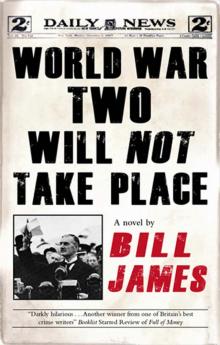 World War Two Will Not Take Place
World War Two Will Not Take Place Pix (Volume Book 24) (Harpur & Iles Mysteries)
Pix (Volume Book 24) (Harpur & Iles Mysteries) Disclosures
Disclosures The Principals
The Principals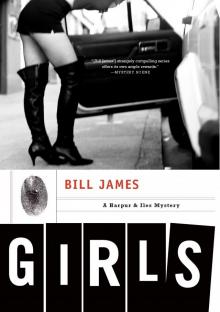 Girls
Girls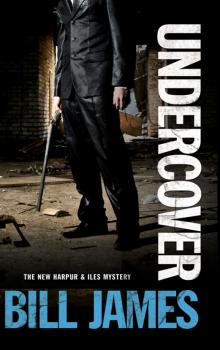 Undercover
Undercover Come Clean (1989)
Come Clean (1989) Close
Close Blaze Away
Blaze Away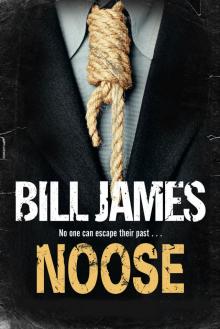 Noose
Noose First Fix Your Alibi
First Fix Your Alibi Hitmen I Have Known
Hitmen I Have Known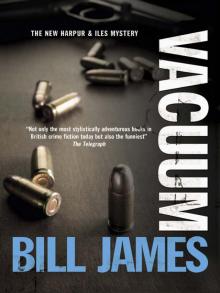 Vacuum
Vacuum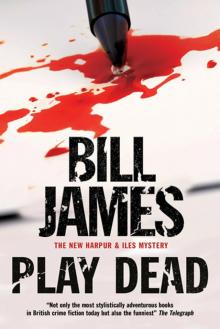 Play Dead
Play Dead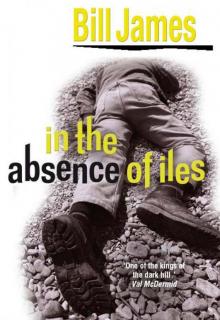 In the Absence of Iles
In the Absence of Iles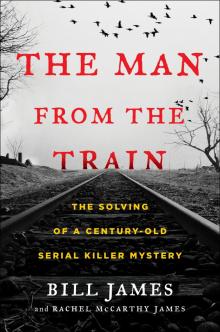 The Man from the Train
The Man from the Train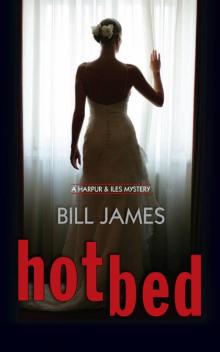 Hotbed
Hotbed Popular Crime
Popular Crime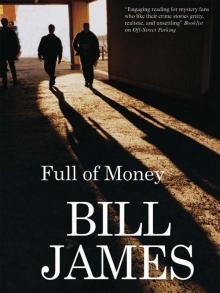 Full of Money
Full of Money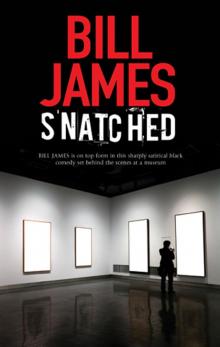 Snatched
Snatched